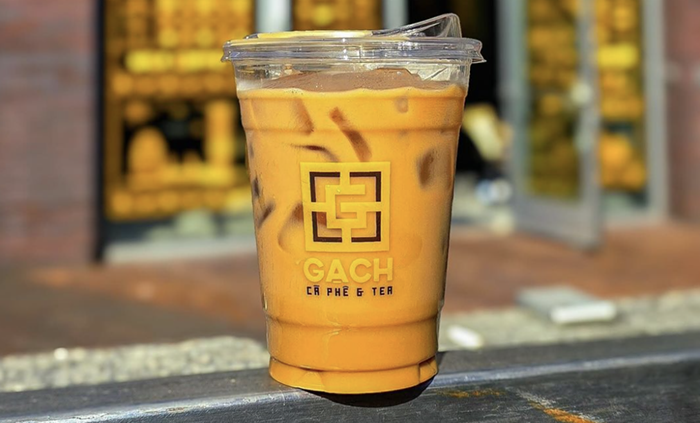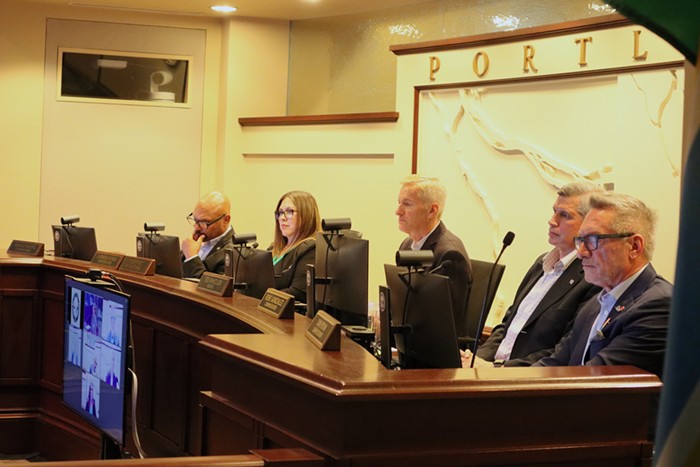Bless the first person to decide the shiny gray contents of an oyster shell were worth slurping. It seems so improbable.
Some suggest that astute ancestors first observed animals feasting on the bivalves. But the leap surely required serious hunger. Let's face it: Oysters don't look edible. Luckily for the brave gustatory pioneers, an oyster is a thing of delicious beauty—fresh and briny, the smallest bit sweet, simply alive.
Something primal keeps us eating oysters. Sure, the idea of chewing a cow, still mooing and kicking between our teeth, is tasteless, but deep in our lizard brains we're connected to the pleasure of ingesting a creature that only moments ago snoozed snugly in its shell. Call it gourmet barbarism. Hell, we've built restaurants on the concept.
In Portland, the newest is EaT on North Williams. EaT is primarily billed as an oyster bar in the New Orleans tradition, and it succeeds well on that specific angle. Their oyster selection is small, but spans the continent. There is a pointed focus on local, and the price (depending on market) isn't too exorbitant.
Oysters are served without fuss, on trays of pellet ice with a lemon wedge or two, allowing the mollusks to speak for themselves. Enjoy a half dozen Oregon- farmed Kumamotos ($9), stunningly arranged in a circle like petite jewels. Lemon is sufficient for the slurp—allowing the Kumamoto's sweetness and velvety texture to develop—but a drop or two of hot vinegar (an unlabeled bottle lurks on the table) results in fireworks.
Fine plain, the oysters are elevated by EaT's grubbin' oyster po' boys. Bad oyster po' boys are far too common—generally a result of poorly fried oysters. Thankfully, EaT's preparation is perfect: The breading remains locked to the oyster, retaining a tender, not slimy, texture. Packed in a hoagie roll with mild comeback sauce (think mayo and hot sauce), pickles, and tomatoes, the oysters shine. Is it a $10 shine? That's debatable.
EaT's Oysters Rockefeller is another wonderful shellfish presentation. These tasty baked parcels come in threes ($7) and sixes (a better deal at $12). Baked after being topped with watercress, spinach, and garlic puree, they live up to their moneyed name. However, the "accent of absinthe" listed on the menu is wholly undetectable.
The rest of EaT's "Creole classics" are largely shadowed by the oyster preparations. The seafood gumbo ($12) is a tad too salty, as is the jambalaya ($10) with house-made Andouille. Of the two, the jambalaya is better—a good Holy Trinity (green pepper, onions, and celery) balance right up front.
From the selection of sides, the red beans and rice ($5) has a mushy consistency but a fine flavor when paired with a house-made chaurice sausage (add $3) that carries lovely deep liver tones. And fried pickle chips ($5) are spot on, with a crunchy batter that doesn't slide off at first bite.
EaT's Nawlins atmosphere remains just this side of "theme park." The bar is gorgeous and saltines on the table are appreciated—but I had a distinct tourist-trap sensation as I sipped my powerful, sugary Hurricane.
Though you can't beat the $1 lunchtime Captain's martinis, I'd skip the sazerac until the bartenders develop a bit more precision and adjust the type and amount of absinthe they use.
EaT's worth the visit for the down-to-earth oyster joy. However, it'll take a bit more tweaking for their menu to really shine—and a bit more time, dust, and customer damage before the sharp corners are knocked off and it develops that old, mellow New Orleans feel.



















